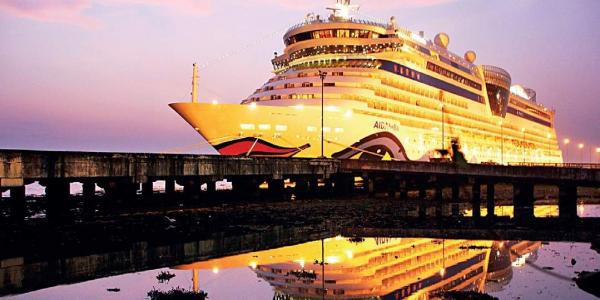Setting the sails for cruise tourism in India
Cruise tourism is a booming sector worldwide but in India it remains largely unexplored. To boost the industry, the government has improved existing schemes and introduced some new rules.
One of the fastest growing wings of the global leisure industry, cruise tourism is set to sail in India too. The country has a vast coastline, which, when clubbed with its rich historical and cultural heritage, can be a major tourist attraction; and although cruises have been on offer in India for a long time, cruise tourism is likely to rise due to development of infrastructure and easing visa rules.
The ministry of tourism hopes to attract five million cruise tourists to India by 2040, union minister of state for tourism K.J. Alphons had said recently.
Development of cruise tourism is looked after by a task force which includes representatives of ministry of tourism and ministry of shipping, along with representatives of major ports and stakeholders. In 2009, the task force had given a green signal to foreign flag vessels to call at Indian ports without having to obtain a license from director general of shipping. This facility was extended up till February 5, 2024 in a recent meeting of the task force.
“Government of India has taken strong measures for promoting cruise tourism in India and has also appointed an international consultant to develop it. This will help in understanding immigration system, CSF system, custom formalities, port regulations etc. In the past few months, a good number of cruise liners have been showing interest, and in coming years, cruise tourism will see a great boost in India,” said Nishant Pitti CEO and founder of Ease My Trip, an Indian online travel company headquartered in Delhi.
Further, in order to have uniform processes at all ports, Standard Operating Procedures (SOPs) were revised and made operational in November, 2017.
“Developments have already started for promoting cruise tourism in India. There has been a stable rise in the number of ships and cruise passengers calling on Indian ports in the last few years. As per the ministry of shipping, against 55 cruise ship calls for the year 2003-04, the number of cruise ship calls increased to 158 for the year 2016-17,”said Pitti.
In 2017-18, 1,62,660 cruise passengers and 139 cruise ships visited India at six major ports-Mumbai Port, Chennai Port, Cochin Port, Kolkata Port, New Mangalore Port and Mormugao Port.
New docks, old coasts
“There are plans to develop new infrastructure at five major ports, including Mumbai, Goa, New Mangalore, Chennai and Kochi. It includes hospitality, retail, shopping and restaurants. Mumbai is going to be the hub of cruise tourism in India and sites like Sassoon Dock and Sewree Fort of the city will be developed as tourist attractions. Other locations like Kanhoji Angre Island, Mandwa, Alibaug and Vijaydurga, would also play important roles in this complete cruise package,” said Pitti.
A new terminal is already being developed at Kochi, in the south Indian state of Kerala, where facilities such as passenger lounge, crew lounge, 30 immigration counters, eight customs clearance counters, seven security check counters, tourist information counter, duty-free shops, bank services, foreign exchange counter, and cafeteria have been proposed.
As per media reports, the government is also thinking of exploring the possibility of hosting F1H20 or the Formula 1 Powerboat World Championship in Mumbai, the capital of the western state of Maharashtra. Promotion of water sports will be a key attraction under the Mumbai cruise tourism action plan.
Meanwhile, the government has extended e-visa facility to cruise ships for tourists who intend to make casual, recreational, medical and business trips to India. International tourists can now apply for an e-visa three days before arrival using on board facilities. After the vessel has docked at the port, all that a passenger would be required to do is record biometrics with the Bureau of Immigration (BoI).










